The HJC RPHA 1 is a top-spec helmet designed for the track but it actually feels more at home on the road

Contents of this review
The HJC RPHA 1 is HJC’s most track-focused helmet available to the bike buying public. It meets FIM standards to be used in racing at levels as high as MotoGP, and is not designed with road comfort, or distance capability in mind meeting ECE 22.06 standards.
It’s sold with a Pinlock insert in the box, as well as an optional rear spoiler which can be installed at home, should you wish to.
Tried and tested by Dan Sutherland for six months and 4,000 miles
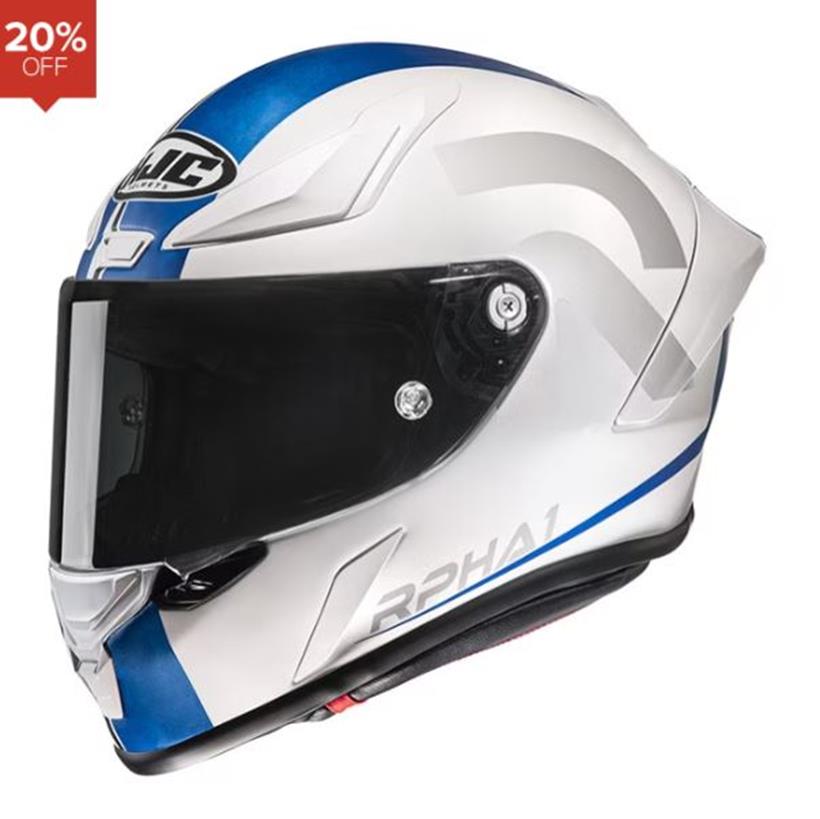

Pros
- ECE 22.06
- Stable
- Quiet
- Well built
- Good visibility
Cons
- Track venting could be better
- Rear spoiler compromises look
| Weight | 1450g |
| Construction | Carbon fibre |
| Chin strap type | Double D buckle |
| Intercom ready | Yes |
| Drop down sun visor | No |
| Pinlock | Included and fitted |
| Interior | Fully removable |
| Shell sizes | Five - 2XS-XS, S-M, L, XL-2XL |
| Warranty | Five years |
| Safety standard | ECE22.06/FIM homologated |
It was developed across several years of high speed competition and can be seen protecting the heads of 2023 British Superbike champion, Tommy Bridewell as well as MotoGP stars Brad Binder, Fabio Quartararo, and Yamaha test rider Cal Crutchlow.
Although not developed with road riders at heart, I have spent thousands of miles in this lid – using it for daily duties across the warmer and colder months. It was also my helmet of choice for a 24 hour endurance race in 2023, competing on 125s around the twisting Rowrah Circuit in Cumbria.
Is the HJC RPHA 1 comfortable?
Given its design brief, the RPHA 1 doesn’t need to be as civilised as it is on the road. Although race inspired, I’ve happily used it on a daily basis without discomfort, meaning you only need one lid for commuting, weekend rides, and trackday fun.
During my time with the HJC, I’ve ridden thousands of miles on the road, as well as competed in a 24-hour endurance race around the wriggling Rowrah Circuit in Cumbria with the Freetech 125 series.
It was here that it felt the least comfortable – quickly getting very warm and sweaty inside despite having all the vents open, with the visor also occasionally misting thanks to my heavier breathing.
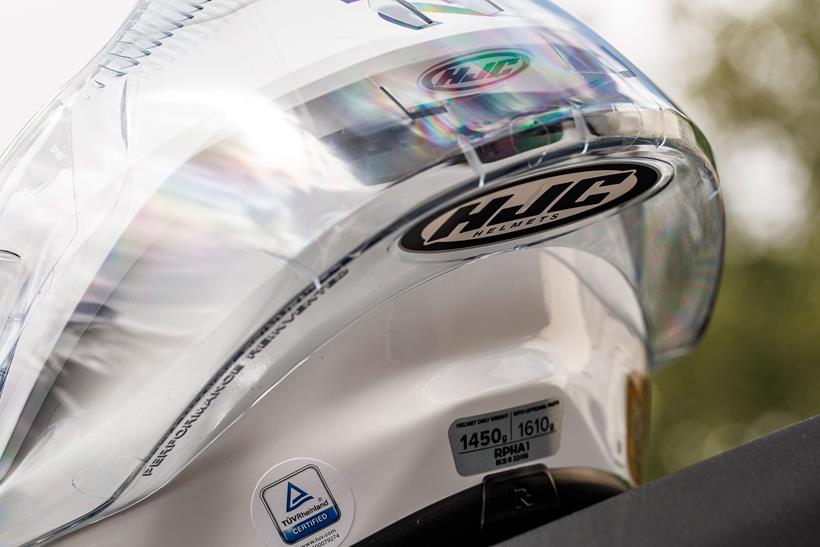
What visor arrangement does the RPHA 1 have?
As standard, the RPHA 1 comes with a clear visor and a Pinlock 120 insert. Being a track focussed crash helmet there is no drop down sun visor, and the darker visors are available as £54.99 optional extras.
Accessories aside, there’s a great field of vision is this helmet, with strong visibility either side, as well as up above – important when you’re tucked in to the tank when riding on track.
Unfortunately, I did have issues with steaming on track when wearing this helmet – causing the need for the occasional crack of the visor on the straights. I put this down to issues with ventilation – with my head also getting extremely warm and sweaty in these conditions.

Other options, including Shoei’s X-SPR Pro have performed far better in this scenario for, however I have not tested both back to back on the same circuit.
Is the ventilation any good?
The HJC RPHA 1 comes with vents on the chin, and forehead area – with five intakes and four exhausts in total.
Unfortunately, despite this, I have had issues with fogging on track – especially during the cooler night stints in my endurance race. Taking place on 125s, it was a far slower race pace than a conventional trackday on a larger bike – so it may prove to perform better at higher speed.
I’m a bit of a heavy breather on track and even with the Pinlock 120 insert, I did need to occasionally open the visor to let in some air. I also got a very warm head, causing me to sweat harder in my face than many other lids I’ve used on track.
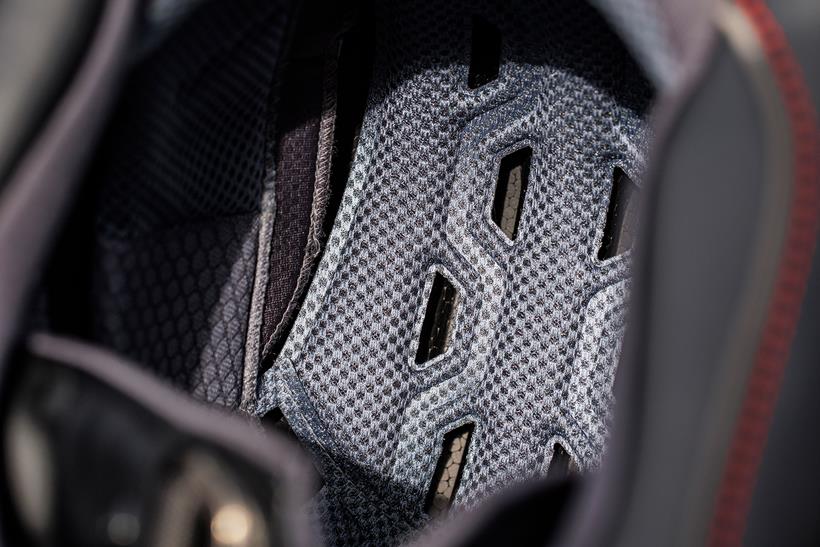
Things are much nicer on the road though, and the ability to click the visor fully shut did wonders for keeping the cold and drizzle out during sodden winter commuter trips. As race helmets go, it’s one of the most practical on the market.
How is the wind noise?
The HJC’s ability to cut out the surrounding noise is really impressive, too. Much like a previous HJC RPHA 11 I used (and adored) this is a sporty lid that manages to blend performance with everyday practicality.
Sure, it’s no sports touring design, but when compared with some other more uncompromising track helmets, it is a great option to go for.
Even when worn at speed on a naked bike there is minimal wind noise, and it remains composed stable on your head with the optional transparent rear spoiler which you stick on yourself.

The reason for the inclusion of this DIY wing is because this helmet meets FIM standards for racing, with the product also sold with tear-offs and emergency release cheek pads – making it ready for club racing out of the box.
Does the HJC RPHA 1 look good?
I’m not really one for plain helmet designs. Life’s too short for boring colours! If I had my time again, I wouldn’t have gone for the white livery – there’s nothing wrong with it, but it just looks a little bit bland. Still, it is hundreds of pounds cheaper than some MotoGP colour options and that shouldn’t be overlooked.
As for the actual helmet itself, I think it’s rather smart – doing an impressive trick of looking quite large in your hands and yet feeling small, dainty, and secure when it’s actually on your head.
Compared to the likes of Shark’s incoming Aeron GP, it does look very understated and comes with the option of a clear rear spoiler to attach at home. Being a racing wannabe I installed this almost straight away and then immediately regretted it.

In hindsight, I prefer the look of it without and unless you’re riding something really sporty, you do feel like a bit of a wally for having such a long aero wing sticking off the back of your head.
Being clear, you can also see any dirt and streaks that have managed to get behind it, which you are then unable to get to and wipe clean.
Is the HJC RPHA 1 good quality?
The HJC RPHA 1 does feel like a quality product, that will stand the test of time. And it really wants to, for the price that they’re asking for…
All of the vents are easily operated in gloves, and the visor moves seamlessly – clicking into place audibly. With the rear spoiler in place it feels incredibly stable at speed too – reducing the impact of buffeting on naked bikes and reducing rider fatigue.
The fully removable interior feels plush, with the integrated nose piece adding to the already very racy look. The quality finish is further backed up by a five year warranty too – showing HJC have real faith in their benchmark product.
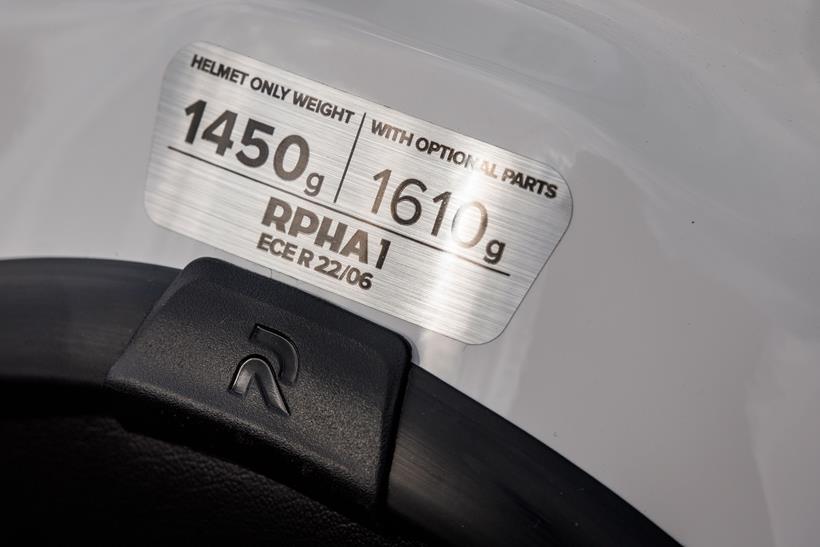
How does the HJC RPHA stack up against others in terms of value?
The HJC RPHA 1 starts at £649.99 and climbs to £849.99 depending on the colour you want. That is not cheap, but it’s about on the money for a helmet in this class.
Rivals include the Shoei X-SPR Pro that starts at £699.99, as well as the £949.99 Shark Aeron GP, and £749.99-on Arai RX-7V FIM. When compared to these, the HJC seems really quite cheap!
However, having also tested the Shoei, that is my preference of the two for comfort on your head (the HJC is more stable on the move though) and I’ve also used far cheaper helmets including the sub-£400 Suomy TX-Pro that performed better on a race track.
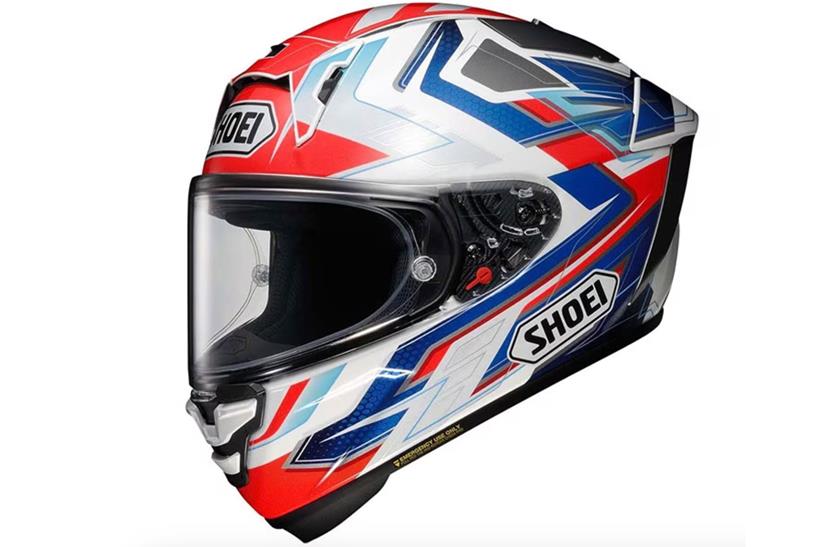

The rear stabilizer with flaps help to provide extra stability while the rider is braking and the lower air spoiler helps to reduce drag and lift. The visor is fitted with a double secured lock system and is pinlock ready and a Mist-retardant CWR-F2R Pinlock® visor is included in the box.
| Construction | 6 Ply Shock-absorbent fibre shell in AIM+ |
| ECE Rating | 22.06 |
| Chinstrap type | Double D Ring |
| Pinlock | Included in the box |
| Warranty | 5 years |
- Modular EPS liner system with multiple densities
- Mist-retardant CWR-F2R Pinlock® visor
- E.Q.R.S. security system (Emergency Quick Release System)
- Fully removable and washable interior pads
- High-performance ventilation with 7 closable air inlets & 6 air outlets
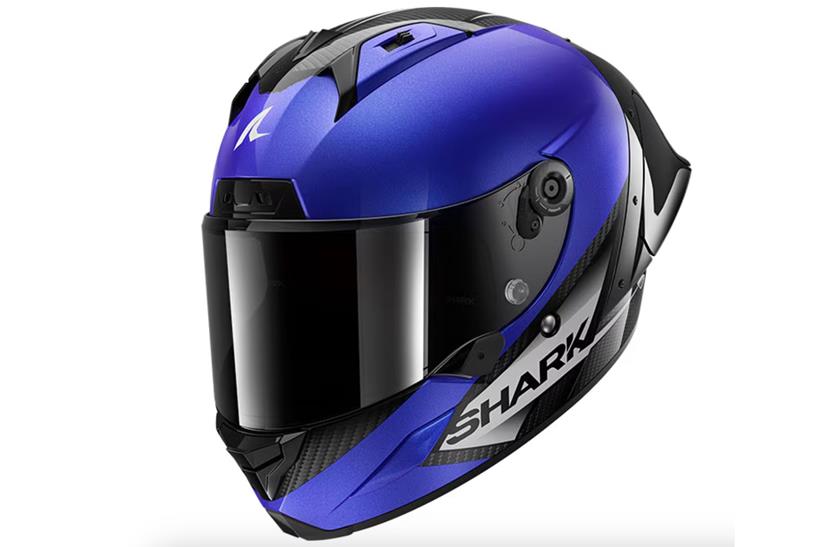

There are five vent inlets and seven exhaust points, allowing for increased airflow through the helmet. The emergency quick release system allows for the internal pads to removed if required in the event of an accident. The lining is made from Sanitized® Alvéotech antimicrobial fabric to keep the interior fresh and clean. The quick release visor system has four anchor points and the visor has and anti-scratch anti-fog treatment.
| Construction | Carbon on view & aramid (COVA) |
| ECE Rating | 22.06 |
| Chinstrap type | Double-D |
| Pinlock | Pinlock ready |
| Warranty | 5 years |
- A²S Adaptive Aero System allows auto-adaptation of the shape of the spoiler to the rider's riding position
- 5 air inlets and 7 air exhausts to ensure optimal airflow and rider comfort
- Emergency Quick release system - allows for internal pads removable in the event of an accident
- Easy fit system: additional comfort for riders who wear glasses
- Quick and intuitive cheek pad removal
- Ergo racing chin guard seal which provides stable support and lowers the position of the helmet
- Smoked visor & tear-off included in the box
- Quick-release visor system with 4 anchor points
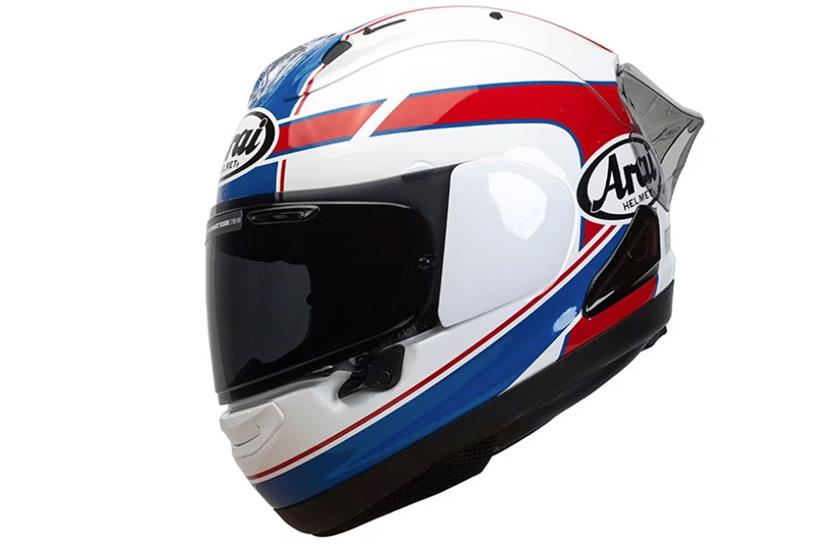

The helmet has speaker pockets to allow for the addition of an intercom or bluetooth sound system and also features an emergency release system.
| Construction | Peripherally Belted Structural Net Composite (PB-SNC²) outer shell construction |
| ECE Rating | 22.06 |
| Chinstrap type | Double-D |
| Warranty | 5 yers |
- Top and side ventilation
- Replaceable cheek pads, interior, chinstrap covers and neckroll
- Speaker pockets
- Emergency Release System (ERS)
- Pinlock insert included
- Adjustable patented Air Wing
So what’s the overall verdict?
I find my own verdict on the HJC RPHA 1 rather perplexing. While the brand’s own promotional material talking about the product’s uncompromising race-focussed nature, it’s actually the calm road manners and civilised qualities that standout as the best bit of this helmet for me.
I like the stability at speed, the visibility, and the chunky robust feel. In fact, it’s only when I’ve showed it a race track that I’ve actually been left a touch disappointed.
Don’t get me wrong, this is a very good product, and owners’ reviews on the MCN Shop reflect this, but I have used better helmets for trackday activities. However, for a blend of sporty road riding and the occasional stint on track, it could be a nice helmet to consider – doing a good job of offering two products in one.
If I had my time again though, I think I would’ve ditched the rear spoiler for a slightly more understated look – especially when using it predominantly on the road.
Also tested by Adam Binnie for one year on the road
Published 13.10.23

Generally speaking, the kit worn by MotoGP riders is best reserved for track use only – helmets like the HJC RPHA 1 are designed to suit the demands of competitive racing, which introduces a completely different set of priorities than we have as road riders.
But does it really? On track you want good visibility, low-weight, effective ventilation and aerodynamic efficiency – but that’s what I want on the road, too.
Yet even HJC’s own marketing material seems to want to put you off, stating in no uncertain terms that the RPHA 1 “does NOT have all the niceties of a road helmet, it is NOT for pottering.” This is a full-on, take it or leave it race lid, exactly the same as used by professional riders.


Pros
- 22.06 and FIM approved
- Great visibility
- Huge ventilation
- Surprisingly comfortable
Cons
- Cheaper, non-FIM rivals
| Weight | 1500g |
| Construction | PIM+ Shell |
| Chin strap type | Double D buckle |
| Intercom ready | Yes |
| Drop down sun visor | No |
| Pinlock | Included and fitted |
| Interior | Silvercool lining |
| Shell sizes | Five - 2XS-XS, S-M, L, XL-2XL |
| Warranty | Five years |
| Safety standard | 22.06, FIM |
Thing is, on paper the RPHA 1 comes with a huge spec and a top-tier FIM Racing homologation, and yet you don’t need a sponsorship deal to afford it, so it looks like an ideal sportsbike helmet. How uncompromising can it be?
Comfort
I was expecting comfort to be very low down on the list of features, foam and padding add extra weight, to the detriment of performance. But the HJC RPHA 1 comes with removable crown and cheek pads, with the latter interchangeable throughout the range to help you get the best fit, and it feels incredibly comfortable.
The lining features Silver Cool tech to wick away sweat and dry quickly and there are more vents on it than any other helmet I’ve ever owned, but more on that later.
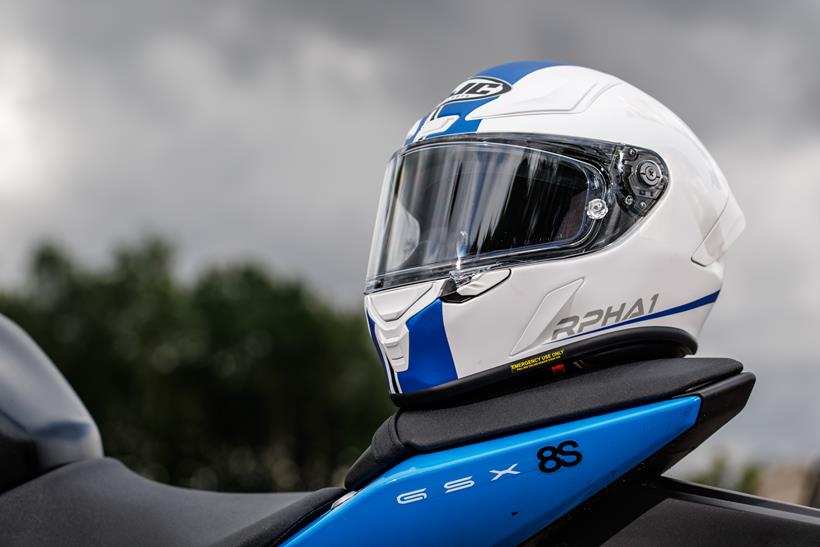
It’s a firm fitment, which will appeal to some more than others, and to be honest this took time to grow on me. Now I absolutely love it – once broken in, it feels moulded to my head and incredibly stable on the move.
Weirdly it also seems more flexible once it’s warmed up a bit. Don’t judge the long-term comfort by just pulling it on in a shop, is what I’m saying.
Visor
There’s no drop-down sun visor in this helmet but the internal padding has a groove for sunglasses. Purchasing a separate tinted visor is probably a wise move – you only get a clear one as standard.
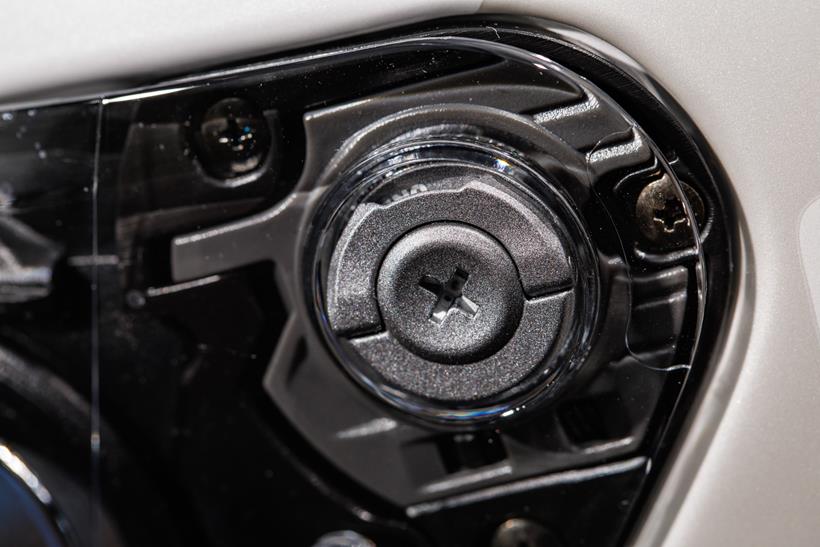
The visor only really has two positions, fully open or closed, and snaps between the two in a very satisfying way. You can have it open half-way but there isn’t a positive indent to keep it there and I’ve found it’ll just ping shut at higher speed.
There’s a locking tab so you can secure it shut, but it’s a bit fiddly in gloves. There’s a single tab for opening it on the left-hand side – no good if you’re stationary and holding the clutch.
Finally the field of vision is excellent – at least in the vertical plane, which means you can get into a low tuck on a sportsbike and still have excellent vision down the road. I really notice this when swapping back into a sports-touring lid like the Shark Spartan RS Carbon, where I have to ride more upright in order to see.

Side to side is less impressive, not annoyingly so, but I do find myself having to turn my head a little further when doing shoulder checks. I don’t suppose racers do those on track very often, in fairness.
Ventilation
This is perhaps the most impressive feature and good ventilation is something the HJC RPHA 1 shares with other HJC helmets (as we noted in our HJC RPHA 70 review). I have a very hot head when I ride and will quite often have at least some of the vents open all year round.
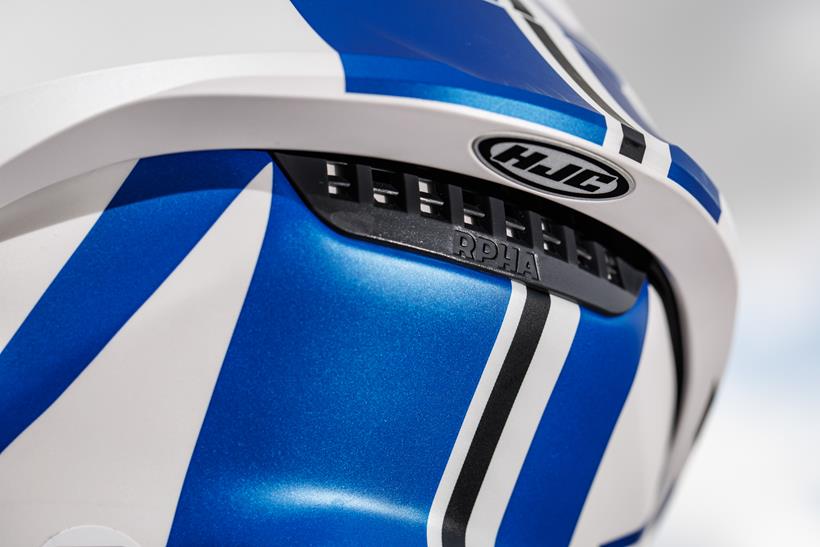
With them all open though the blast of air is considerable – this is the best ventilated helmet I’ve ever ridden in, and even on hot days it’s possible to feel the cooling effect of that. Additionally the Silver Cool lining really helps keep skin temperatures down in areas not affected by the ventilation.
Noise
All of this aero focus has a tangible on-road benefit – the HJC RPHA 1 is really quiet and super stable even at speed. Despite the slippery profile I was still expecting some wind noise purely because sound-deadening material is heavy and doesn’t have a performance benefit, but it’s no more noticeable here than any other lid I’ve worn. The chunkier-than-expected neck roll helps here.
And despite the claim that this HJC hasn’t been designed with a road rider in mind, there are cut-outs for an intercom is you want to fit one, which is quite incredible. I think it’d be a real shame to ruin the lines of this helmet with an external comms device glued to the outside, but you might feel differently.
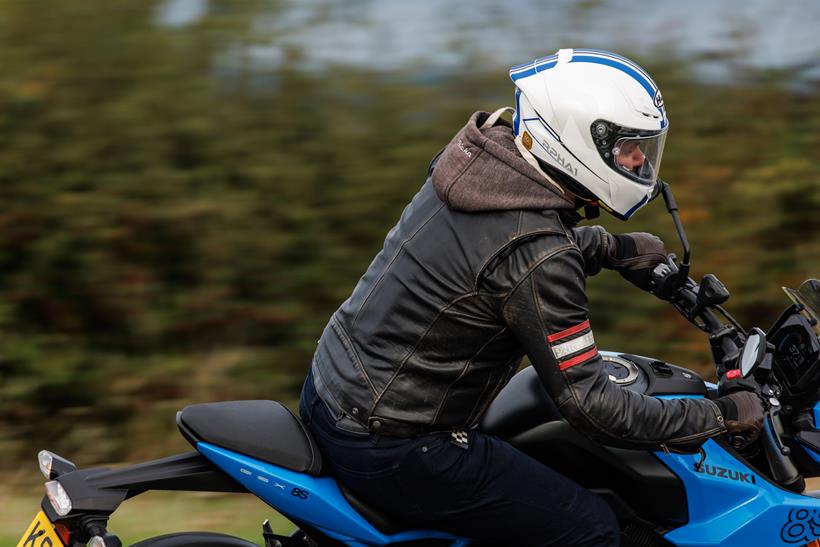
Looks
I’ll be honest and say it was the looks of this helmet that first appealed to me – it’s very sporty looking but with a much more subtle silhouette than something like the AGV Pista GP-RR, so doesn’t look out of place on the road.
There’s a huge amount of paint choice too, from intricate race rep specials to Marvel and DC tie-ins, plus plainer graphics and racing stripes (like the one I’ve got) and solid white and black too.
You do get an optional rear spoiler in the box – this is essentially for track use only because it doesn’t have a huge effect at road speeds, and therefore doesn’t come pre-installed. It’s made from clear plastic to camouflage it a bit and is secured with some plastic fixings and double-sided tape (the red stuff in the picture above – you can’t see this when it’s installed properly). Again – up to you.
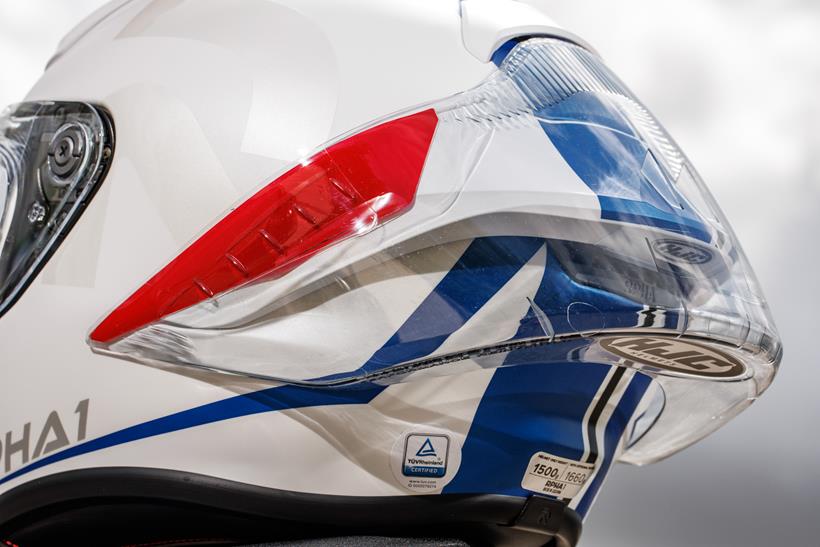
Quality
As you’d expect from a helmet used by professional riders the HJC RPHA 1 feels top-notch – everything from the action of the vents and visor to the crisp detail in the paintwork.
In comparison with rivals, it’s not the lightest – mine states 1,500g (size medium, remember) which isn’t exactly ground-breaking. That said, it’s worth stating again how comfy and quiet the RPHA-1 is on the move.
All of this is backed up by a five-year-warranty (from the date of purchase, seven from manufacture, whichever comes first).
Value
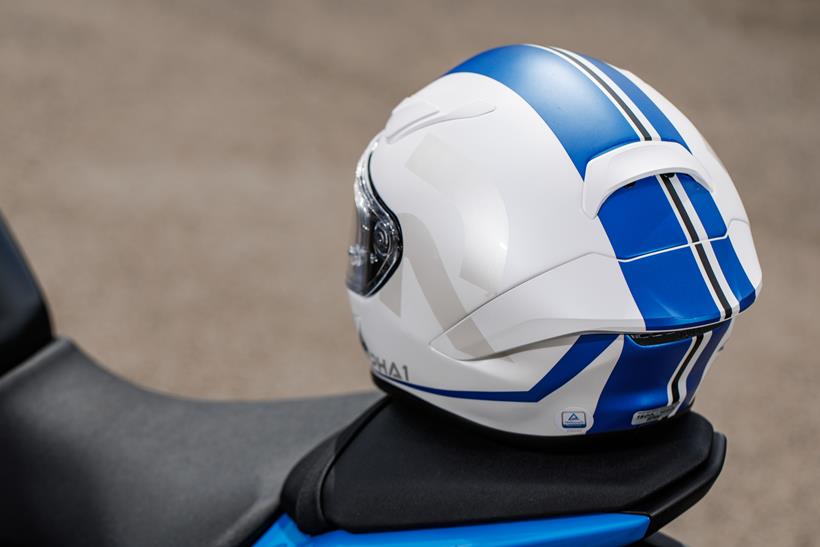
Ultimately it comes down to how much you value that FIM sticker, either because you want to use it for professional racing, or you just want the ultimate sportsbike helmet.
Verdict
I was honestly expecting the RPHA 1 to be fine for a short Sunday blast but a bit much for anything more than that. It is, as HJC is so keen to point out, the same lid its athletes wear for a limited time on a racetrack, and not really designed for touring.
The thing is though I now find myself reaching for it every time I go out for a ride, regardless of length. The only feature it’s missing over my more road-focussed helmets is a drop-down visor and intercom, and I could fit the latter if I wanted to.
Otherwise it’s a brilliant sportsbike helmet – offering an expansive view of the road, superb ventilation, surprising comfort levels and a secure, confidence-inspiring fit.


Pros
- 22.06 and FIM approved
- Great visibility
- Huge ventilation
- Surprisingly comfortable
Cons
- Cheaper, non-FIM rivals
| Weight | 1500g |
| Construction | PIM+ Shell |
| Chin strap type | Double D buckle |
| Intercom ready | Yes |
| Drop down sun visor | No |
| Pinlock | Included and fitted |
| Interior | Silvercool lining |
| Shell sizes | Five - 2XS-XS, S-M, L, XL-2XL |
| Warranty | Five years |
| Safety standard | 22.06, FIM |
- Just so you know, we may receive a commission or other compensation from the links on this website - read why you should trust us.































